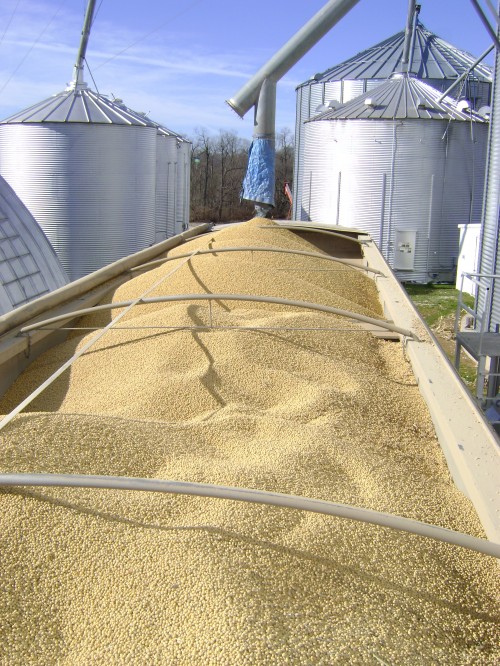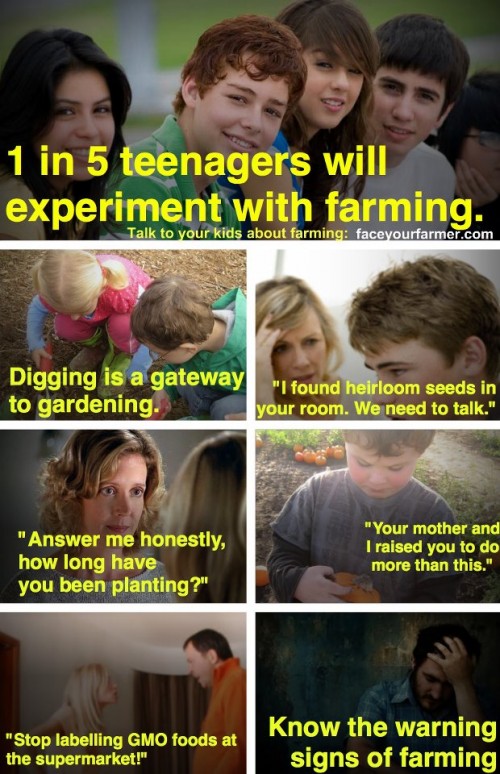Social Media and Ag
I may have used affiliate links for some of the items in this post. Using an affiliate link to purchase an item won't cost you any more money, but I may receive payment if you click on a link and make a purchase. For more information, visit the disclosures page.
Yesterday I participated in the #AgChat about Social Media in Agriculture. It was a super interesting 2 hours of conversation. I got to see how other agvocates make use of social media for their brands, causes, and general ag awareness.
What really struck home for me in this conversation is that we all share our stories – but I don’t feel that we always do agriculture justice. Granted we can’t spend all of our time defending agriculture from main stream media about “pink slime” and other sensationalist stories. We would spend all of our time on the defensive, which is not where we should be. We want to share our stories and experiences with each other, but we should also be connecting with our consumers on their turf.
What better way to do that than with social networking? Most people in agriculture who use the internet are already sharing their ag stories with the world. But how, do we get the attention of the people who really need to know about ag?
As a farmer’s wife, I know and spend a lot of time with farmers – but farming has never been a major part of my life. Yes, I want to grow my own food. I have a garden each summer, and we buy our meat a whole pork or quarter beef at a time. Farming just isn’t how I make a living. I make my living as a web developer, and because of that I find myself involved in agriculture in a completely different way than my husband. He plants, fertilizes, sprays, harvests, and trucks grain but I get on the computer and tell people about it.
The best agriculture posts on my blog are the ones that Matt writes himself. My favorite recent post is the one he wrote about hauling grain over Christmas Break – he’s an Ag Teacher by day and a farmer by night (sort of like the batman of food).
Of course, Matt doesn’t always have the time to write a post about his adventures on the farm. That’s where I come in. I can get on social media and talk about the things we do (and in this case, when I say “we,” I mostly mean “him”).
As the tech geek that I am, I am involved on lots of social networks. I use Facebook, Twitter,and Pinterest, just to name a few. Here is how I use them to promote Ag.
For me, Facebook is about connecting with the people I know in real life in a digital way. As a web developer, most of my Facebook friends are not in the business of farming, so I find it’s a great way to introduce those friends to the world of agriculture. Sometimes it’s something completely ridiculous like a play on the Jimmy Hendricks song Purple Haze
…or a joking graphic about the dangers of experimenting with agriculture
but all of this gets the topics in agriculture into the minds of my not so agriculturally inclined friends. I feel like it takes farming and meets them at their level, in a way that they can relate to the world. From this general introduction to the topic of agriculture I can get feedback and work agriculture into conversations more easily.
For me twitter is a mixed bag of topics. I love to craft so I spend a lot of time talking about crafting projects, my latest quilt and other non-ag topics. That means I have a lot of followers who follow my tweets to read about my crafting, quilting, gardening, etc. – and when they follow me, they also get to see my tweets about farming.
Instagram is probably the fastest growing social media platform out there, with millions and millions of people using it daily. It’s a photo-based platform so you can post images and videos with a caption for all of your followers to see. If you don’t have many followers, sites like nitreo.com are available to help change that. Even better, there are sites that review these tools so you know what is a good investment and what isn’t. There are sites like Toolbusters who can tell you what tools would be good for your account. For an example, you can see Upleap reviewed by Tool Busters. online. Another great feature of the app is you can post your image or video with hashtags so that people who don’t follow you can still see what you post. You can also share stories on Instagram which is a post that disappears after 24 hours. It’s great if you want to post something in the moment and not have it constantly on your feed. This is a fantastic way for stakeholders to actually see what you get up to on a day to day business and gives you the opportunity to communicate with them via the Instagram direct messenger service.
For me Pinterest is the hardest of the social networks to work into agriculture for the non-ag community. After all, why would you follow a pin board about a topic you aren’t interested in? There is definitely a reason to try to approach agriculture topics on Pinterest, though. Pinterest is 80% women. Which likely means that 80% of Pinterest users are or will become the primary purchaser in their household. (Anecdotal reference: my husband avoids going to the grocery store like he avoids the plague.) That means that getting your agriculture story on Pinterest gives you the highest chance of reaching the people who want to buy the food your grow/raise. They have questions about the pesticides in their corn, and the hormones in their beef, even if they don’t ask about it.
Pinterest users also seem to love recipes. That means, I post a lot of recipes on my blog which hopefully get pinned on Pinterest and bring new users to my blog. They get a good recipe, and maybe a little information about agriculture while they’re there – even if it’s just what a farmer really does day to day.
Using Social Media to Your Advantage
What forms of social media do you use? How do you tell your story? When you tell your story do you “grow crops” and “raise animals” or do you produce them? How do those terms affect the way your story is perceived outside of the agriculture community? To draw light onto the agricultural community, farming websites and companies might want to consider enhancing their social media content to help increase potential clientele. Using pr companies could help to improve your business. There should be pr agencies local to you, regardless of where you live. Some farmers in the Philippines trying to sell their products might want to use an agency to advance their business. If you’re wondering ‘how can using pr agencies in the Philippines help?‘, they could offer you attractive online marketing strategies to help you sell your products. No matter where in the world you live, there should be a pr company local to you to help you grow your brand.




Thank you for this great post. I am so happy to hear that you are connecting in a positive way on #AgChat . Hope to see you again next week!